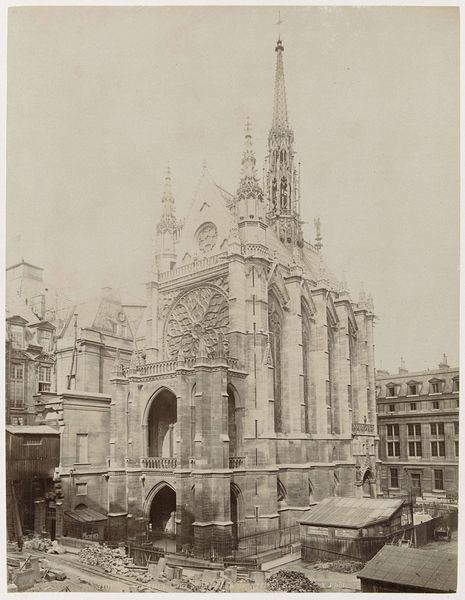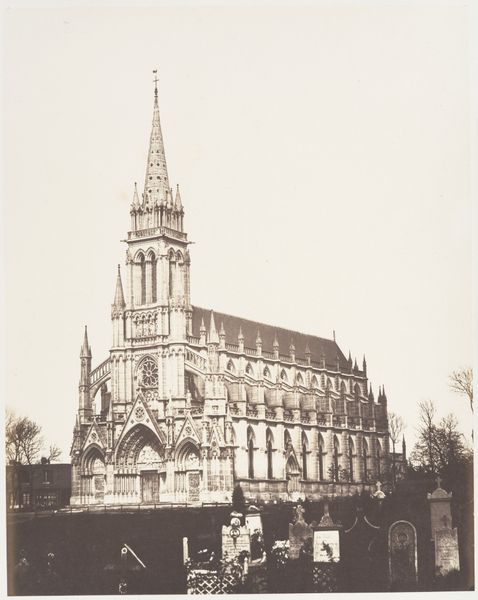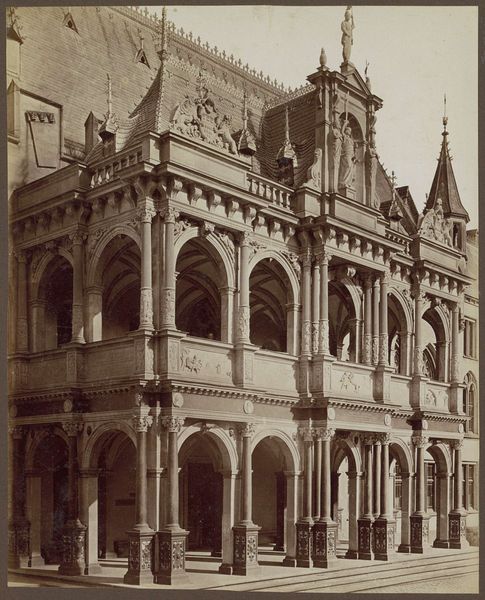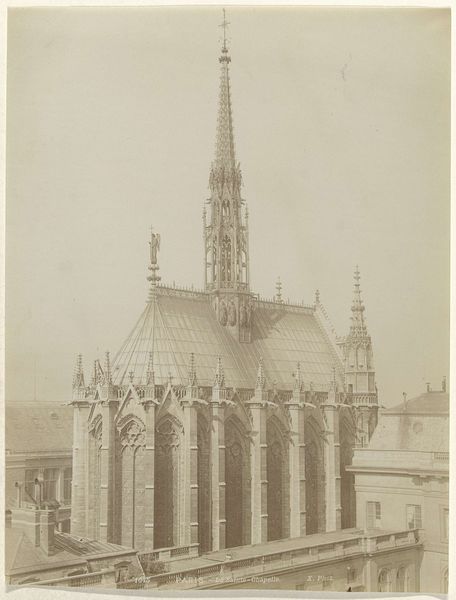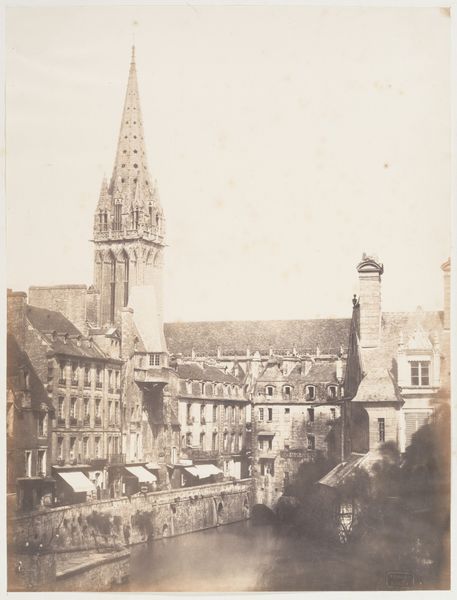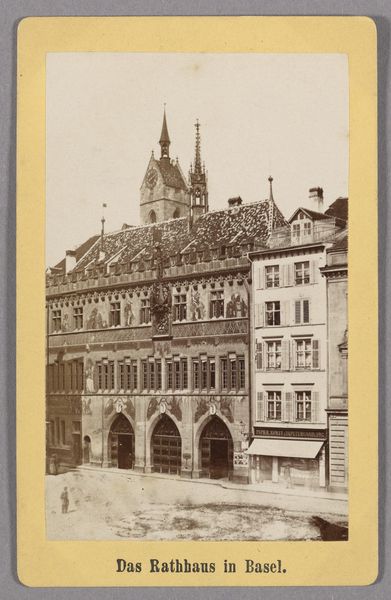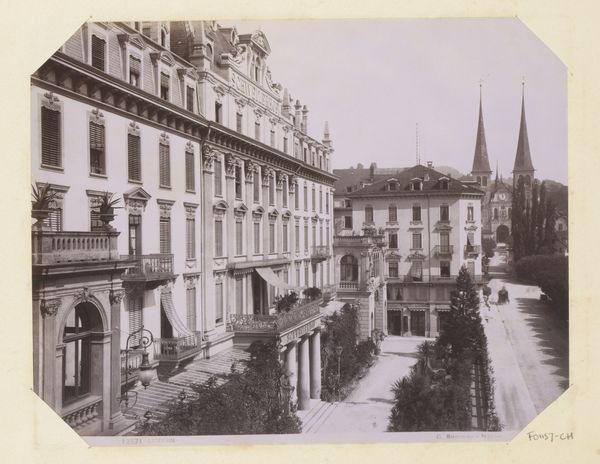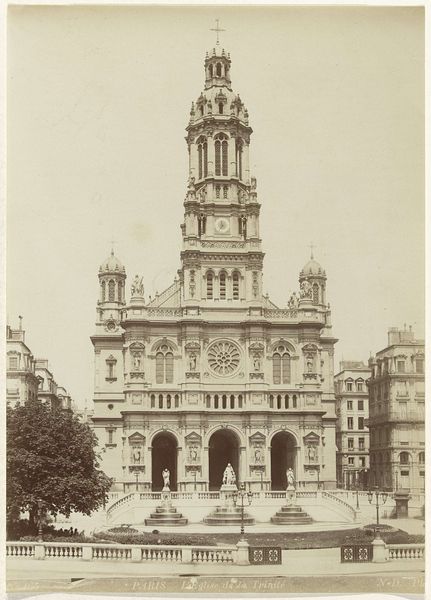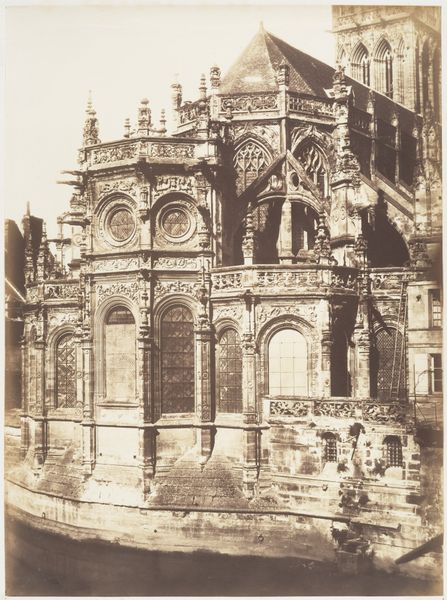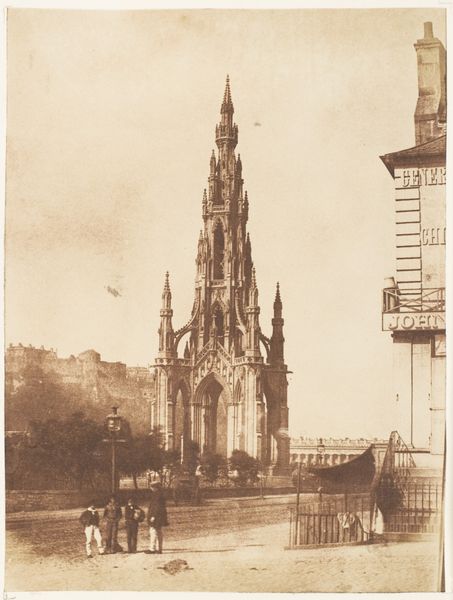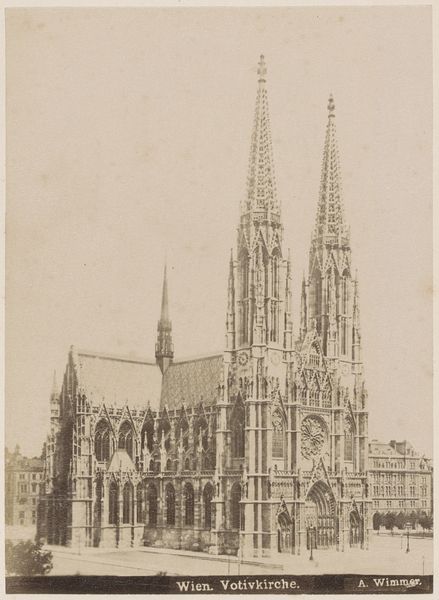
daguerreotype, photography, architecture
#
landscape
#
daguerreotype
#
perspective
#
historic architecture
#
photography
#
romanesque
#
historical photography
#
cityscape
#
architecture
#
realism
Dimensions: height 283 mm, width 200 mm, height 441 mm, width 342 mm
Copyright: Rijks Museum: Open Domain
Editor: Here we have Édouard Baldus’ "La Sainte Chapelle in Parijs," a daguerreotype made sometime between 1855 and 1865. What strikes me most is how imposing and permanent the building seems, captured in a fleeting, emerging medium like photography. What’s your perspective on this, and how would you interpret this work? Curator: Baldus' photograph invites us to consider the intertwined histories of architecture, power, and representation. The Sainte Chapelle, commissioned by King Louis IX, served as a reliquary, a physical manifestation of divine right and royal authority. Baldus, working under the auspices of Napoleon III, was documenting France’s architectural heritage but also participating in constructing a visual narrative of imperial grandeur, so in essence how does the photograph not only record history but also participate in its construction and legitimation? Editor: That's fascinating. The photograph then becomes a tool to reinforce existing power structures. I didn’t quite see it that way, I guess. What are some of the ways Baldus achieves this sense of grandeur in the photograph? Curator: Consider the vantage point. Baldus positions us, the viewers, slightly below the chapel, emphasizing its verticality and imposing scale. How does that angle subtly imply deference or reverence? Moreover, the clarity and detail afforded by the daguerreotype process, makes it seem more factual. Baldus then transforms architecture into an ideological tool through perspective and detail. Editor: It's incredible how the angle and even the medium can contribute to such a powerful message about power and authority. Curator: Absolutely, and this image then allows us to question how photographic representation may reinforce or challenge hegemonic ideologies by further propagating its message across platforms. Considering his intentions along with his composition is crucial. Editor: This has really reshaped my view on the role photography plays in shaping perceptions of history and power. Curator: Indeed, by examining images like this we gain insight on visual culture and broader historical, social, and political conversations about architecture and representation, and Baldus' contribution to shaping our view of it.
Comments
No comments
Be the first to comment and join the conversation on the ultimate creative platform.
